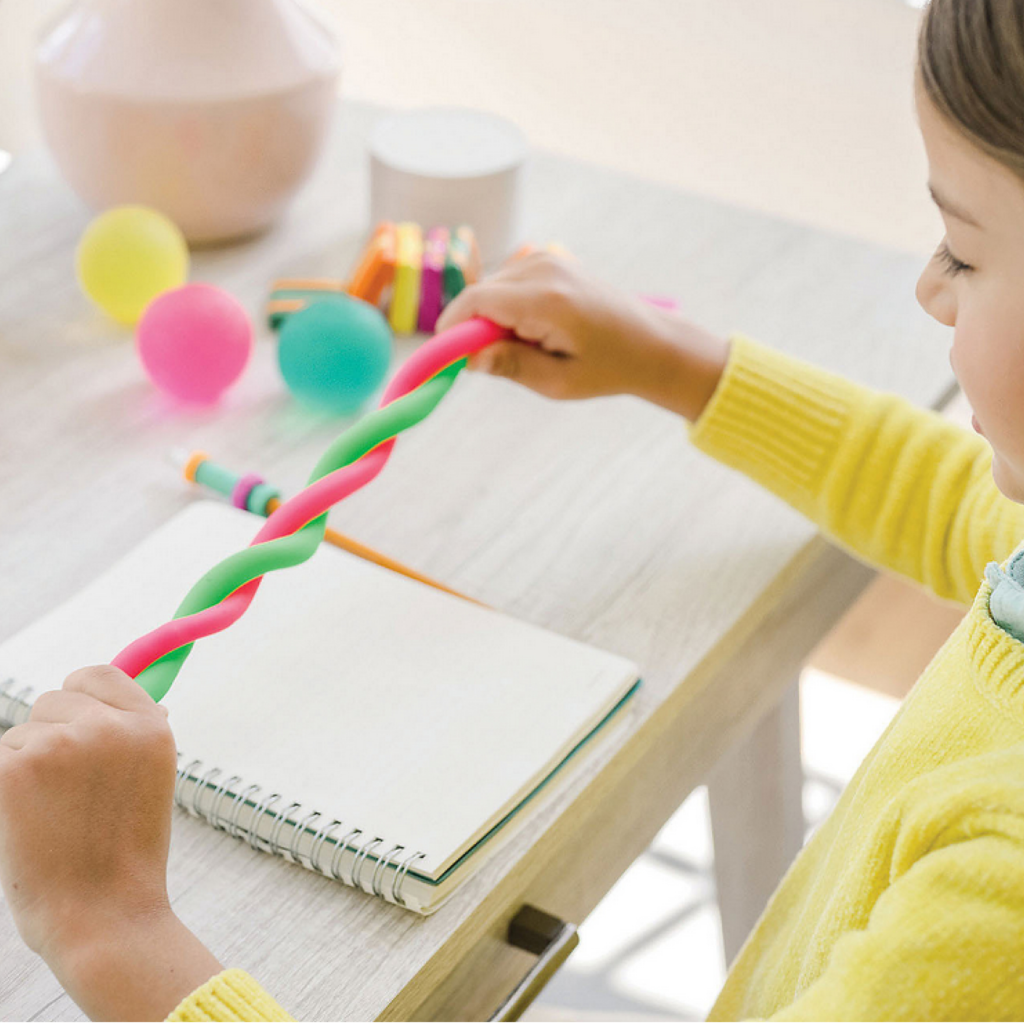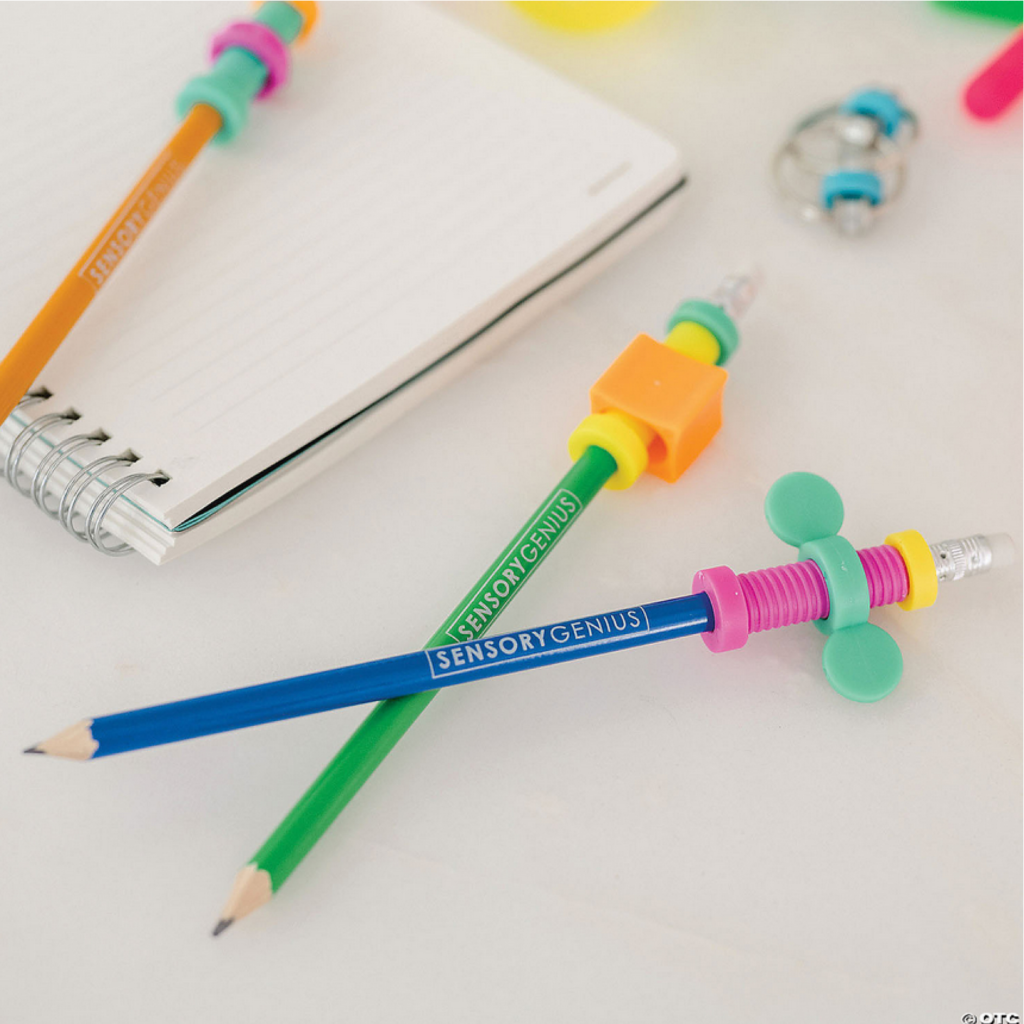How do Fidget Toys Work?

We’ve written about sensory toys before on this blog, but today we’re focusing on fidget toys and their usefulness. Fidget toys are devices that provide a repetitive action that a user can engage in with little to no thought. Fidget devices are often visually pleasing and may also offer tactile or auditory stimulation, such as textured surfaces or clicking mechanisms.
When they first became prominent several years ago, fidget toys met with some controversy. Teachers thought they were distracting and didn’t want them in classrooms.

However, while fidget toys may look like mindless distractions, they are actually effective therapeutic tools. Fidget toys have been found to help children with ADHD and other neurodivergent conditions focus and reduce anxiety. In short, rather than distracting children from learning, fidget toys may very well aid their progress.
So, what impact do fidget toys actually have on their users?
Fidget Tools Increase Focus
Firstly, fidget toys are now known to increase an individual’s ability to focus while sitting still for long periods of time. A recent study by researchers from the University of Kentucky and the University of Northern Colorado found a positive correlation between children with ADHD using fidget spinners and their “on-task behavior.” Earlier studies have found boosts to classroom productivity when children are allowed to squeeze stress balls or even chew gum in class. This is good news for children — and adults! — who have to sit through long classes or meetings.

Exactly why children with ADHD think better when they are allowed to move around or fidget is still unknown. However, research continues to affirm that the freedom to fidget or wiggle increases their ability to think clearly.
One hypothesis is that schooling has become more sedentary than ever before and children do not have the energetic outlets they once did. Fidgeting may be one way that the body compensates for this excess energy while allowing the brain to focus on cognitive tasks.
Digging deeper, researchers in New Zealand used MRI scans to look at what happens in the brain when a person is allowed to fidget. They found that fidgeting increases blood flow to the prefrontal cortex, the part of the brain involved in concentration during a decision-making task. So, far from distracting themselves, a fidgeting child is physically empowering their brain to make decisions – an important life skill for all children to practice.

Fidget Toys Reduce Stress and Anxiety
The second benefit of fidget toys is that they help reduce anxiety and stress. Physicians at John Hopkins found that providing fidget tools to children pre-surgery helped calm young patients. The fidget toys helped the children relax. They also provide a comforting distraction from the thing (surgery) that was making the child feel anxious in the first place.

Psychiatrists at the University of Cincinnati found fidget toys to be good outlets for disorders like depression and OCD as well. Fidgeting can help deflect symptoms like intrusive thoughts and obsessive behaviors. Fidget toys can be particularly helpful outlets for children and adults who may have self-harming behavior. The fidget toys become a focus point for those tics, preventing more serious behaviors from occurring.
What type of fidget toy is right for your child?
There are two main types of fidget toys: visual and tactile stimulators. Visual fidgets have bright colors or shiny surfaces and dazzle children as they play. These are good for children to play with while they listen to a lecture or audiobook, or when they are experiencing stress. This category includes aids like Shashibo puzzle boxes or a Kaleidescope fidget.

On the other hand, tactile fidgets don’t require visual attention and are good for children to use while reading or doing homework. Tactile fidgets are devices that let users enact repetitive motions. These include squeezing putties or twisting sticks.
Because fidgeting can be distracting to folks around a child, there are also tools to help muffle the sounds. Wiggle seats and small, quiet fidgets like flick sticks can let a child squirm discreetly.

If you want to dive deeper, check out our buying guide for sensory toys. There, we break down different types of sensory aids and how they work for different children.
